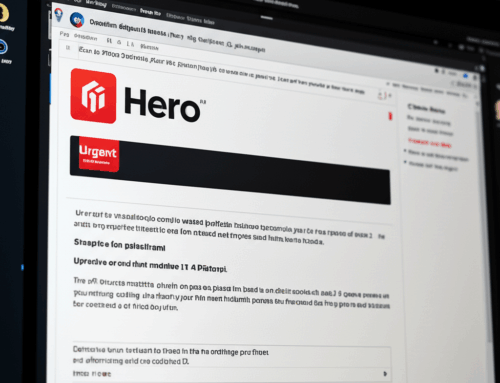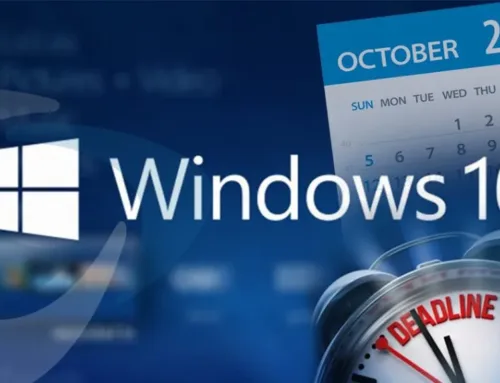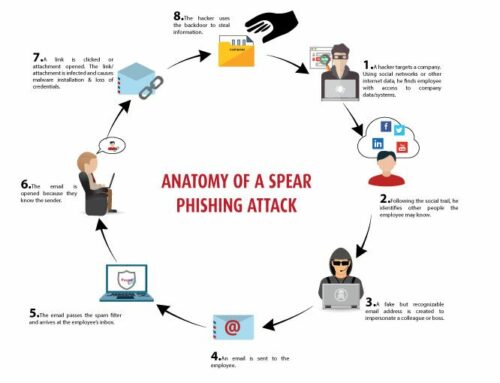Anatomy of a Phishing Scam: How Cybercriminals Trick You (And How to Stay Safe)

Phishing Emails Are Getting Smarter — Here’s How You Can Stay Smarter
Over the years, phishing scams have become increasingly deceptive. What once appeared as obvious fakes are now highly convincing messages, often crafted to look legitimate. At Computify, we’ve seen a sharp increase in these scams — particularly those that exploit public fear and urgency, such as COVID-19 alerts.
To help you stay ahead, this post breaks down the anatomy of a phishing scam. Along the way, you’ll learn to recognize warning signs and apply practical steps to keep yourself and your organization safe.
1. First, Why Do Phishing Emails Work So Well?
To begin with, phishing relies on manipulating human emotions — mainly fear, urgency, and trust. Scammers often impersonate banks, popular services, or government departments. During the height of the COVID-19 pandemic, for example, many people received fake emails promising vaccine updates or emergency relief.
Because these messages appear timely and important, they prompt users to act without thinking. As a result, sensitive data can be handed over before a user realizes anything is wrong.
2. Next, What Are the Warning Signs of a Phishing Email?
Although phishing emails are becoming more polished, they still contain red flags. Recognizing them early is key to preventing damage.
Here’s what to look out for:
-
Urgent or threatening language – such as “Your account will be deactivated in 24 hours.”
-
Strange links or attachments – Always hover over links before clicking.
-
Generic greetings – like “Dear Customer” instead of using your name.
-
Odd sender addresses – often slightly altered versions of real domains.
-
Requests for private information – legitimate companies will never ask for passwords or credit card details via email.
For a real-world example, be sure to visit Computify’s detailed breakdown of a phishing email.
3. Then, Consider the Role of COVID-19 in Phishing Campaigns
As the pandemic spread globally, scammers saw an opportunity. According to TechBuzz Ireland, phishing attacks increased dramatically, with fake health alerts and vaccine appointment links becoming common.
In many cases, these emails were designed to appear as if they came from health authorities, including the World Health Organization. Unfortunately, many victims clicked without hesitation, believing the messages were legitimate.
4. So, How Can You Protect Yourself from These Attacks?
Fortunately, with awareness and caution, you can reduce your risk. At Computify, we recommend the following best practices:
✅ Pause before clicking – especially if an email demands immediate action.
✅ Verify sender details – look closely at the full email address.
✅ Be cautious with attachments – never open unexpected files.
✅ Use multi-factor authentication (MFA) – to add an extra layer of protection.
✅ Report suspicious messages – don’t just delete them. Forward them to your IT team or email provider.
By adopting these habits, you’ll be far less likely to fall for a scam.
5. Additionally, Businesses Are High-Value Targets
It’s important to realize that phishing doesn’t only affect individuals. In fact, businesses are frequently targeted because they provide access to larger networks, sensitive data, and financial systems.
When just one employee clicks a malicious link, the entire organization can be compromised. For this reason, regular training and a culture of cybersecurity awareness are essential for every business — regardless of size.
6. Finally, Let Computify Help You Stay Ahead
Cyber threats won’t slow down, but neither will we. At Computify, we offer proactive cybersecurity services, including real-time monitoring, phishing detection, and employee training programs. If you’re ever unsure about an email, let our team investigate it for you.
Stay Aware. Stay Protected. Stay with Computify.
Phishing emails continue to evolve, but with the right tools and mindset, you can stay ahead. Recognizing the signs, thinking critically, and staying informed are the first steps toward cybersecurity.
🔒 Need expert help protecting your business or home network?
Get in touch with Computify today — let’s keep your digital life secure.





